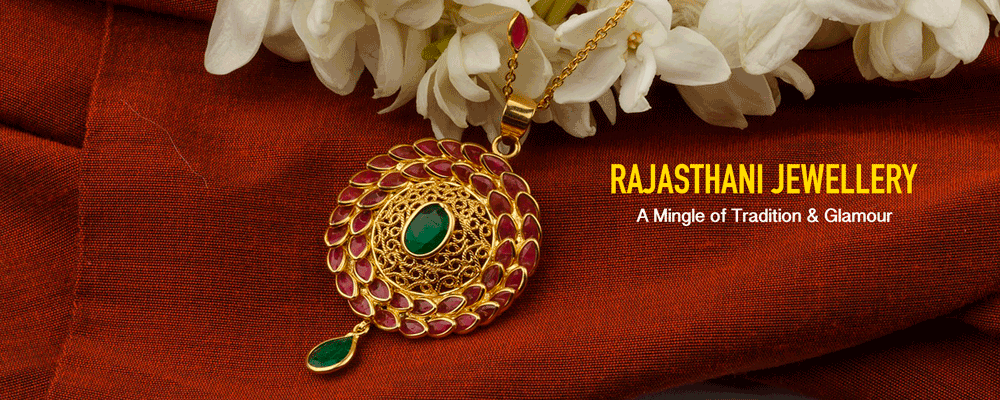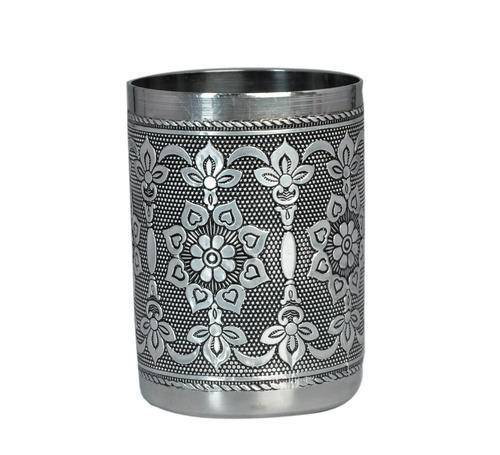Meenakari Jewellery Of Rajasthan

Jewellery for an Indian bride usually means a lot of possible use of gem stones, delicate moment detailing and meena work. An idea may be formed concerning the influence of fashions and create. Rajasthan Calling: Rajasthan has influenced Indian jewelry with its Meenakari works that are stunning and highly in demand among ladies who loves traditional jewellery. Enameling is the artwork of decorating a metal area by over or fusing pieces of mineral materials that are distinct, attaching it or coloring it. Enameling is considered the most appealing and technical of all metal decorations.

This art form requires technical ability to perfect the look of ornament. History accredits Raja Man Singh of Mewar as a patron of this Meenakari art in century Jaipur. Meenakari was brought by Raja Man Singh of Amber in the turn of the century into Rajasthan. Man Singh established them and brought minakars in Lahore from the Mughal palace. Meenakari’s procedure necessitates a high level of application and ability. The bit of metal on is fixed on a lac stick. Delicate designs of flowers, birds, fishare etched or engraved on it. This leads to the production of grooves or walls, to maintain color. Thus, Rajasthan became the center specializing in Meena work across the world.
Meenakari Jewellery Of Rajasthan

What’s Meenakari? Meenakari designing entails the process of grooves or coating engravings in decoration with enamels. The decoration can be of silver, gold, copper and brass. The designs on jewelry resembs motif or (a design like) pictures or animal and figures of gods and goddess.
Dust of colour is poured into the grooves as well as every color is fired. The furnace’s heat melts the liquid and the color becomes spread to the groove. This process is repeated with every color. Colors, that are resistant, are applied as they’re fired with each color, as every color is fired. White is used the last, and the color is applied accordingly. Adhering to the colour, the object is polished with agate or cooled and burnished. The depth of the grooves full of different colours determines the play of light. Both Silver and Gold can be utilized as a base for Meenakari work. Whereas all colors can be applied making it the medium of enamelers, a number of colors are mainly used, such as gold, blue, green to silver.

The idea is to present an image like quality of the set. The enamels are full of and this enriches the renders and look clarity to the subject on which the grooves were designed based. The Meenakari jewellery communicates topics and events. This is among the highlight of the Meenakari technique which is used by traditional artisans of Rajasthan. The Meenakar (Artisan) frequently works with a team of craftsmen. As Meenakari is usually performed on your reverse side of kundan jewellery, your Meenakar has to work with your goldsmith, your engraver or ghaaria, your designer or chitteria and jadiya that applies the gemstone on the kundan or gold. The finished product is a marvel of the Artisan’s or craftsmen’s expertise and their techniques.
The Meenakari functions are applied as two types – Panchrangi meena and khula rang. In Khula rang, enamel of one color is used. In case the Meenakari jewellery is intended to Indian brides, then Ek rang khula might be matched with the color of the wedding trousseau. This may lay focus on the full appearance of this bride with matching earrings, armbands, necklaces, bangles etc. Jaipur is your main center of Meenakari.

Traditional Mughal colors such as red, green as well as white, dominate the art of enameling in Jaipur. The rich, ruby red colour used here is extremely desired by the women from all over the world. Nathdwara, Bikaner as well as Udaipur are also famous for their silver Meenakari Work.
